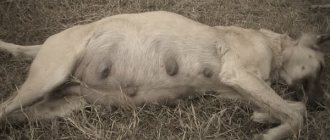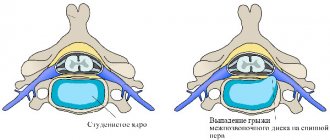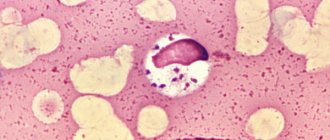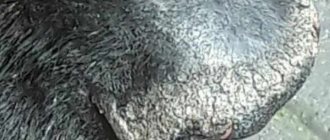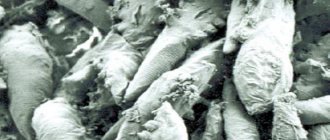Lack of vitamins
Avitaminosis in dogs is a disease in which the body is almost completely lacking in essential vitamins. A simpler type of this pathology is called hypovitaminosis. It is characterized not by a complete absence of nutrients, but by their deficiency. This disease is more difficult to detect, because, unlike vitamin deficiency, it does not manifest itself so pronouncedly.
Both diseases can reduce the activity of the animal. Moreover, pathology predisposes to the activation of various infections in the body. Lack of vitamins is often observed in the spring. The likelihood of its occurrence is also high if the dog eats mainly canned or thermally processed food. Below we present information about the causes, symptoms and treatment of vitamin deficiency in dogs.
Treating vitamin deficiency in dogs (symptoms, photos)
A pathology involving an almost complete absence of substances needed by the body is defined in veterinary medicine as vitamin deficiency in dogs. Many owners do not consider this condition to be a serious illness. But vitamin deficiency contributes to the deterioration of the dog’s health. In the absence of timely treatment, death occurs.
Vitamins refer to organic compounds that play a special role in a dog’s life. They help increase the intensity of all physiological processes. Thanks to vitamins, the immune system is strengthened and resistance to various infections increases. If a dog gets sick, recovery occurs faster and treatment is easier.
Vitamin deficiency in a dog. Lack of nutrients in the body. Symptoms depend on the age of the animal. Ringworm may occur. The musculoskeletal system functions poorly. Dull fur.
Vitamin deficiency contributes to the disruption of many important functions of the canine body.
A milder form of pathology is hypovitaminosis. It is characterized by a lack of nutrients. The clinical picture is not clearly expressed, so recognizing the disease is quite difficult.
When is the peak of the disease?
Typically, signs of this pathology are observed in late February - March.
Young dogs are more susceptible to the disease.
The severity of symptoms depends on the age and sex of the animal. Whelping bitches and young dogs suffer the most.
What is the danger?
For young animals, vitamin deficiency is a threat to normal growth and development. If the owner does not take action, the dog develops the following pathologies:
- Anemia.
- Diseases of the nervous system.
- Diseases of the musculoskeletal system.
The disease can develop into a disease of the nervous system.
Some chronic diseases may also worsen.
Why does pathology develop?
Pathology can develop during pregnancy.
A pet’s excessively high need for vitamins is provoked by:
- therapy of infectious pathologies;
- temperature “jumps”;
- bearing a fetus;
- lactation period;
- helminthic infestation;
- gastrointestinal pathologies.
During the treatment of infectious pathologies, the dog is prescribed antibiotic drugs. They provoke the breakdown of vitamins needed by the body.
Often, symptoms of vitamin deficiency occur in animals that live in too cold or hot climates. The body's need for vitamins increases due to the presence of tapeworms.
Which animals are at risk?
Veterinarians know many reasons why a dog may lack vitamins. These are physiological characteristics, health and nutrition problems. But in some situations, pets are especially vulnerable to vitamin deficiency and other pathologies. The following categories of animals are at risk:
- older dogs;
- pets nursing or bearing puppies;
- juveniles;
- animals after illness or surgery;
- street dogs.
Pets that are under increased stress or preparing for exhibitions and competitions also need an additional source of nutrients.
Causes of disease development in dogs
In most cases, this condition develops against the background of other diseases or conditions. Veterinarians identify a number of the most common causes of vitamin deficiency in pets:
- Gastrointestinal diseases;
- Worm infestation;
- Infectious diseases requiring high immunity;
- Pregnancy and after childbirth;
- The period of estrus and sexual hunting;
- After treating a dog's illness with antibiotics.
Four-legged animals often suffer from leptospirosis, chlamydia, parvovirus enteritis, mycoplasmosis and canine distemper - such diseases provoke an increased consumption of vitamins by the pet’s body. As a result, the amount of nutrients obtained from food is not enough to cover the body’s needs, and vitamin deficiency develops.
Read The essence of arthrodesis on the joints of a dog: indications, complications and reviews
Why does it occur
Pet owners need to know the reasons why vitamin deficiency can occur in dogs:
- Infectious diseases. A lack of vitamins can occur against the background of coronavirus or parvovirus infections, leptospirosis, distemper, mycoplasma infection, chlamydia and other dangerous diseases. When the body fights a pathogen, the immune system spends a large number of useful microelements, which requires their replenishment; otherwise, vitamin deficiency occurs.
- Diseases of the gastrointestinal tract. They provoke a violation of the absorption of vitamins in the intestinal tract, which leads to their poor absorption. Pathologies of the gastrointestinal tract system often affect animals that are kept in improper conditions, as well as those that have poor nutrition. To avoid such diseases, you should consult a specialist about feeding and caring for your pet. In some situations, it is necessary to follow a special diet for the dog.
- Use of medications against infectious diseases. Almost always, special medications are prescribed to combat pathogenic microorganisms. Most of them eliminate not only the causative agent of the disease, but also the beneficial microflora that synthesizes vitamins in the body. For example, gram-negative microorganisms produce B vitamins and so on. To reduce side effects from medications, follow your veterinarian's advice.
General information about the disease
If an animal has enough vitamins, it means it has a strong immune system and, accordingly, increased resistance to pathologies. The lack of these components affects the general well-being: the animal experiences weakness and refuses to eat. Vitamin deficiency causes long-term illnesses. Vitamin deficiency requires prompt treatment, but many breeders do not take this disease seriously.
A lack of vital elements is dangerous. Vitamin deficiency in a dog can be fatal. Hypovitaminosis is a mild form of the disease. In this case, the body needs one vitamin. As the disease develops, the dog quickly gets tired and becomes prone to infectious diseases. Hypovitaminosis often appears in the spring. To avoid it, you need to enrich your pet’s diet with healthy foods. Monotonous food is the path to hypovitaminosis! Also, you should not include canned food or products of dubious quality in your diet.
Why does vitamin deficiency occur in dogs?
A possible cause is gastrointestinal disease. The disease in question appears against the background of helminthic infestation. It also develops in pregnant females. Vitamin deficiency occurs in animals that are exposed to drafts or temperature changes.
If antibiotics were used to treat illnesses, you should take them correctly and follow your doctor's recommendations. In some cases, antibiotics lead to the breakdown of vitamins, resulting in this pathology.
What happens if the body does not have enough vitamin A?
The second name of this component is retinol, it is part of fatty foods. To compensate for the lack of retinol, you need to include milk and high-quality liver in your pet’s diet. Fish oil contains large amounts of retinol. It is important to alternate foods of animal origin with plant foods, otherwise you will not be able to overcome the disease. Boiled carrots contain carotene, which is necessary for improving vision. It is worth including this product in your pet’s diet.
- Vitamin deficiency in dogs should not be ignored; the symptoms of the disease differ depending on which vitamin is missing. When vitamin A is deficient, the body struggles to make up for the deficiency. At first, the disease does not appear.
- Subsequently, the growth of the animal slows down, the pet becomes lethargic and irritable.
- Some dogs are thirsty but refuse to eat.
- With vitamin deficiency, the mucous membranes of the mouth darken (however, this symptom is not always observed).
- Vision is impaired.
- The lack of a vital component leads to gastrointestinal pathologies. In severe cases, diseases of the respiratory system appear.
A lack of retinol is detected during the examination. The breeder cannot make a diagnosis on his own. The doctor identifies concomitant diseases and analyzes symptoms. It occurs differently in dogs, the symptoms of vitamin deficiency and treatment also differ. Therapy depends on what stage the disease is at. If the disease is relatively mild, the doctor recommends fish oil and, if necessary, prescribes Trivit.
Vitamin B2 and B5 deficiency: symptoms in dogs
The second name of this component is riboflavin. It is responsible for regenerative and oxidative processes. Riboflavin regulates metabolism. If the pet lacks this component, there is a deficiency of vitamin C. The dog eats reluctantly, becomes lethargic, loses weight, and weakness occurs due to the disease. A sign of B2 deficiency is molting. To compensate for the deficiency of this component, you need to add meat and fish to your diet. The pet must eat eggs. If necessary, the doctor prescribes Riboflavin in tablet form.
Vitamin deficiency can develop due to a lack of nicotinic acid.
- If there is little vitamin B5 in the body, appetite disappears, saliva is produced abundantly, and diarrhea occurs periodically.
- The pet becomes irritable.
- It is worth paying attention to the language. With a deficiency of vitamin B5, it is dark.
To compensate for the lack of vitamin B5, you need to enrich your diet with milk and meat. If necessary, the veterinarian prescribes B5 in ampoules. A furatsilin solution is used to rinse the mouth. If the body experiences a severe lack of this component, antibiotics are prescribed.
Vitamin deficiency B6 and B12 causes and manifestations
Vitamin B6 deficiency occurs in dogs that are poorly fed. In order for the body to have enough of this component, you need to eat food with a moderate protein content. B6 deficiency can be caused by antibiotics.
- With this disease, growth slows down.
- The animal experiences convulsions.
- If the body experiences a significant lack of vitamin B6, anemia develops.
It is important to adjust your diet. The pet must eat food that is well absorbed by the body, it must contain enough pyridoxine. It is recommended to include dairy products in your diet. If a severe deficiency of vitamin B6 is diagnosed, pyridoxine powder is prescribed. If necessary, symptomatic treatment is carried out.
The dog may lack vitamin B12. In this case, the pet quickly loses weight. If the disease progresses to advanced stages, anemia develops and gastrointestinal functions are disrupted. To compensate for the lack of this component, you need to include high-quality milk in your diet; meat is recommended. To compensate for the lack of vitamin B12, the doctor may prescribe Cyanocobalamin, the drug is administered intravenously.
Signs of vitamin C deficiency
As noted, this component is responsible for the state of immunity. Vitamin C deficiency occurs if the dog has eaten a lot of starchy foods. In this case, the vitamin is produced, but in small quantities. Vitamin C deficiency is associated with gastrointestinal pathologies. A predisposing factor is liver disease.
- If the body needs this component, the mucous membranes of the pet’s tongue turn red, it becomes weak and inactive.
- Some dogs have bleeding gums.
- A characteristic symptom of the disease is blood in the feces.
To establish a diagnosis, you need to conduct a comprehensive examination. It is important to identify the functionality of the liver and kidneys. The veterinarian examines the oral mucosa. To compensate for the lack of a vital component, a medication is prescribed. Treatment is not complete without diet. You should include meat porridge with carrots in your diet; your pet will benefit from milk. The doctor also prescribes injections of ascorbic acid. Antibiotics can be used for treatment. Furacilin allows you to restore the condition of the oral cavity.
What are the dangers of vitamin D, E and K deficiency?
The disease is more common in young dogs. It occurs when the body lacks calcium and phosphorus. Vitamin D deficiency is also associated with metabolic disorders. The disease manifests itself with different symptoms.
- An irresistible appetite arises. The animal tries to eat inedible objects.
- The symptom of the disease is diarrhea.
- With a vitamin D deficiency, the dog begins to limp.
- Some animals experience seizures.
- In advanced stages, bone structures become deformed.
To confirm the diagnosis, clinical signs need to be analyzed. The breeder must inform the doctor about the diseases that the pet has suffered. To avoid vitamin D deficiency, you need to feed your pet well and walk it more often. To restore the balance of vitamins, the doctor prescribes fish oil, a medicine in the form of oil. Therapy is carried out using medications containing sodium gluconate.
If the body lacks vitamin E, the functioning of the reproductive system is disrupted. A deficiency of this component is observed in dogs that are poorly fed. To avoid illness, you should give your pet fresh food. The diet should be varied. A lack of vitamin E is often observed in dogs - representatives of decorative breeds. To compensate for the lack of this component, you need to include fresh meat in your diet. If the disease reaches severe stages, the doctor prescribes trivitamin injections.
The body may lack vitamin K. In most cases, the disease is associated with hemorrhagic diathesis. If this component is deficient, the animal eats poorly, and blood clots are visible in the feces and urine. To heal your pet faster, you need to include greens in the diet; meat is also useful. If necessary, the doctor prescribes Undevit. Some preparations with vitamin K are toxic; therefore, the doctor prescribes them in combination with others.
What else contributes
Not only painful conditions contribute to the development of symptoms of vitamin deficiency in dogs; there are a number of physiological reasons:
- Growth period. In small breeds it lasts a couple of months, in large animals it lasts much longer. In any case, at this time they require special nutrition, which contains the necessary vitamins and microelements. Otherwise, the puppy will not fully develop, and any deviations from the norm may remain for life. If your pet eats commercial food, you must choose a menu designed specifically for puppies. When feeding natural food, you should buy additional vitamin complexes.
- Mating period. This is a difficult time for a dog. The animal is constantly in nervous excitement and also exhibits great physical activity. The processes occurring during this period in the pet’s body require an increased amount of microelements for all systems to function normally. During heat, it is important to give the dog high-quality nutrition, and, if necessary, additional supplements, especially if the animal is involved in breeding.
- Pregnancy and feeding puppies. At this time, the dog needs especially complete care and nutrition. The menu should contain trace elements, vitamins and minerals. Almost all quality food brands produce food for pregnant and lactating animals. In addition to natural food, you can purchase additional dietary supplements that will enrich the diet and improve lactation.
Causes of the appearance and development of vitamin deficiency
Vitamin deficiency in a dog is the lack of certain vitamins in the animal’s body. Hypovitaminosis is considered a lack of vitamins, so both concepts can be considered together. They have the same symptoms and very similar treatment and prevention methods, as well as causes. Being prepared, a responsible pet owner will be able to recognize vitamin deficiency in time and seek help, then the dog’s condition will rapidly improve. However, sometimes long-term treatment is required.
The causes of vitamin deficiencies have long been known to veterinarians, so this condition is successfully dealt with. It is difficult to control the balance of vital substances in an animal’s body, because of this it is necessary to know the prerequisites for the occurrence of the disease. Common reasons:
- unbalanced menu;
- improper functioning of the gastrointestinal tract;
- tumors of the stomach and intestines;
- various infectious diseases, chronic;
- liver diseases;
- diseases caused by parasites.
Most vitamins are not produced by the body, which means they must be obtained from the outside - mainly from food. Prolonged unbalanced nutrition leads to a lack of substances that support the proper functioning of internal organs. Disorders of the gastrointestinal tract do not allow vitamins and minerals to be absorbed in full or as a whole, then neither a good menu nor a correct lifestyle will help without special help. Diseases from parasites, most often helminthiases, also lead to loss of substances, at the same time poisoning the body with their waste products.
There are 2 types of vitamin deficiency based on the causes of their occurrence. The first is nutritional and occurs with an unbalanced diet. An endogenous disease occurs secondary to infections, liver problems, helminthiases, and poor digestibility of food.
Risk group, or who most often has vitamin deficiency?
The general condition of the pet’s body, its lifestyle and heredity determines how susceptible it is to vitamin deficiency. The risk group includes pregnant and lactating dogs; their “accumulations” and “receipts” from food are massively used to feed puppies and maintain their own health. Elderly dogs more often suffer from various diseases and improper metabolism, so they also need increased attention and diet correction. Puppies during their growth period consume significantly more vitamins than individuals after 18 months. The risk group also includes pets with chronic diseases, as well as those actively involved in sports.
Important: not only dogs that are actually nursing puppies can suffer from vitamin deficiency. Lactation (and lack of vitamins) can be due to false pregnancy or when the offspring are not allowed to visit the mother.
Veterinarians note that a lack of vitamins often manifests itself in winter and in the first months of spring. At this time, the diet is more meager, since there are fewer seasonal vegetables and fruits on the menu, and the body’s reserves are no longer enough. Additionally, there is less sun and walks in the fresh air (applies mainly to decorative dogs), and this affects the lack of vitamins of a certain group.
How to determine
Signs of vitamin deficiency in dogs are:
- poor appetite;
- weakness;
- lethargy;
- the animal grows slowly;
- skin and coat problems;
- the dog is not gaining weight well;
- the pet cannot conceive offspring.
If one or more symptoms appear, you should contact your veterinarian. It is worth noting that the signs may be different, but the treatment of vitamin deficiency in dogs is always the same - replenishment of the necessary microelement in the body.
The mild stage of the pathology, called hypovitaminosis, is quite tolerant and responds well to treatment. But this is only if the disease is noticed in time. If the illness is not detected at the initial stage, it may progress and become more severe.
Below we will take a closer look at how vitamin deficiency manifests itself in dogs due to a lack of various vitamins.
The first signs of vitamin deficiency
Any caring owner can notice signs of vitamin deficiency in a dog; to do this, it is enough to simply be attentive and know the main symptoms. If you notice that she becomes lethargic, gets tired quickly, sleeps more than before, the condition of her fur and skin changes, the condition of the mucous membranes changes, and the pet’s face and ears often itch, then you should sound the alarm. Very often, a lack of vitamins can be determined by the condition of the skin and coat.
Symptoms of vitamin deficiency on the skin are expressed by damage to the upper layers of the skin, often the skin acquires a yellowish tint. The skin loses its elasticity and becomes flabby. The dog sheds intensely and loses a lot of fur, sometimes even the smell of the pet changes. An experienced veterinarian, after a thorough examination of the pet and a blood test, can make an accurate diagnosis, select the correct treatment and give a number of necessary recommendations for the treatment of vitamin deficiency in the animal. Timely diagnosis will soon return your pet to its previous lifestyle.
Vitamin A
With its deficiency, the dog loses its appetite, and it may completely refuse to eat. As a result, the dog develops problems with the digestive tract. For growing animals, a deficiency of this substance can lead to poor growth, as well as dental disease. The animal becomes apathetic and lethargic. You can make up for the deficiency using a proven method by giving your dog fish oil. In addition, vitamin A is found in egg yolks, beef liver and butter. The condition of a dog with vitamin deficiency is shown in the photo below.
Symptoms of vitamin deficiency and hypovitaminosis
Regardless of which vitamin is lacking, the primary sign of hypo- and vitamin deficiency in dogs is a change in taste preferences (perverted appetite). The pet can eat soil, excrement of other animals, lick whitewashed walls, etc.
| Vitamin | Symptoms and complications of vitamin deficiency, hypovitaminosis |
| A | Puppies experience growth retardation and the replacement of baby teeth slows down. Common symptoms include loss of appetite, lethargy, diarrhea with blood or mucus, weakness in the limbs, peeling skin, hair loss, decreased visual acuity, and loss of smell. If left untreated, a lack of vitamin A leads to the development of tracheitis, bronchitis, cystitis, xerophthalmia (dry eyes), as a result of which the animal loses the ability to see at dusk, then completely loses vision, as well as to nervous disorders. Bitches' estrus cycles are disrupted, reproductive function is lost, and pregnant bitches may experience miscarriages or the birth of dead or severely weakened puppies. |
| B1 (thiamine) | There is loss of appetite, weakness, impaired coordination of movements, metabolic disorders are observed, which in turn leads to diseases of the cardiovascular, digestive, and nervous systems. Changes in the nervous system are accompanied by convulsions and paralysis. Pregnancy and childbirth in bitches are accompanied by complications. |
| B2 (riboflavin) | With this hypo- and avitaminosis, dogs experience loss of appetite, exhaustion, hair loss, decreased body temperature, clouding of the cornea, slow breathing and heartbeat. Without proper treatment, paresis of the limbs, dermatitis, and ulcers on the mucous membrane of the gums, tongue, and lips develop. Puppies are stunted in growth, and dogs' wounds take a long time to heal after surgery. Lack of treatment leads to death. |
| B5 (pantothenic acid) | Loss of appetite, hair loss and color change. Dermatitis develops, and puppies are stunted in growth. |
| B6 (pyridoxine) | Lack of B6 leads to skin diseases, anemia, and disruption of the nervous system, which can result in dogs having seizures. |
| B9 (folic acid) | Symptoms include exhaustion, loss of appetite, dry skin, and dandruff. Puppies experience growth retardation. Lack of treatment leads to anemia, leukopenia - a decrease in the number of leukocytes. |
| B12 (cyanocobalamin) | Vitamin deficiency or hypovitaminosis in dogs associated with the absence or deficiency of B5 leads to nervous disorders. In dogs, the level of hemoglobin in the blood decreases. |
| C (ascorbic acid) | C-vitaminosis or C-hypovitaminosis disrupts the functioning of the digestive system and liver, leading to exhaustion as a result of loss of appetite and refusal to eat, as well as hematuria. There is bleeding and swelling of the gums, redness of the mouth. |
| D (calciferol) | A lack of vitamin D in dogs causes disruption of the digestive system and diseases of the skeletal system. Puppies develop rickets, the symptoms of which are a tense gait, joint pain, bone deformation, etc. Often, with a deficiency, dogs experience perversion of appetite, diarrhea or constipation. |
| E (tocopherol) | E-vitaminosis or E-hypovitaminosis leads to damage to the nervous system, as a result of which dogs may have paralysis or paresis of the limbs. Bitches develop infertility. |
| TO | Lack of vitamin K leads to decreased blood clotting and hemorrhagic diathesis. |
B vitamins
Substances of this group are necessary for the good appearance of the dog. When they are deficient, the animal's fur is the first to suffer; it becomes lifeless, faded, and begins to fall out and become tangled. In addition, B vitamins are actively involved in metabolic processes and have a direct effect on hemoglobin levels. A deficiency of these organic substances can lead to diseases of the nervous system, the signs of which are:
- exhaustion;
- convulsions;
- movement disorder.
You can enrich your animal’s menu with these microelements by including offal (kidneys, liver, stomachs), buckwheat, milk and eggs in the diet.
Consequences of lack of treatment
The disease will progress and gain momentum. Life expectancy forecast is up to two years, depending on the type of deficiency. Veterinarians highlight the most dangerous consequences:
- Changes in bone structure and skeletal structure;
- Paresis of the hind limbs, disability;
- Liver failure;
- External and internal hemorrhages;
- Anemia;
- Disorders of the nervous system;
- Blindness.
Read Dog cough: types, causes, signs, treatment methods and prevention
Depending on the type and stage of vitamin deficiency, death can occur either after a month or after 2 years. One thing is certain: if left untreated, the dog will end its life prematurely due to vitamin deficiency.
Vitamin D
This substance can only be produced under the influence of UV rays. Therefore, after winter, almost everyone experiences a shortage of it. This is especially dangerous for growing individuals, since the vitamin affects the functioning and proper development of the musculoskeletal system. If a growing pet lacks this substance, rickets and other painful bone conditions may develop. The first symptom of vitamin deficiency in a dog in this case will be a strange change in taste preferences - the pet begins to chew chalk or earth.
This disease requires mandatory sunbathing or ultraviolet irradiation. It is recommended to include phosphorus salts, crushed egg shells and meat and bone meal in the menu. Vitamin D is found in chicken eggs, milk and beef liver.
How to cure the disease?
Treatment of vitamin deficiency in dogs consists of changing the diet; it is enough to introduce into the pet’s diet foods containing large amounts of vitamins that it lacks.
- A: found in large quantities in fish oil, milk, liver, yolk, carrots and greens.
- Q2: Add more meat and fish products to your diet, as well as eggs and whey.
- Q5: it is necessary to feed the dog raw meat and dairy products; in especially severe cases, a course of antibiotic treatment is prescribed.
- B6: in case of a deficiency of this vitamin, pyridoxine powder or tablets containing vitamin B6 are prescribed, and symptomatic therapy is often carried out in parallel.
- B12: milk, fish and meat flour are added to the diet; in case of acute deficiency of vitamin B12, symptomatic drug therapy is prescribed.
- C: carrots, milk, nettles are added to the pet’s menu; injections, tablets containing vitamin C are often prescribed, and antibiotics may be prescribed.
- D: in the summer, it is recommended to walk in the fresh air more often, consume fish oil, and treatment with sodium gluconate is also mandatory.
- E: the pet needs to eat more meat and dairy products, injections of trivitamin and Levit are prescribed.
- K: diversify the dog’s diet with meat and herbs; intravenous injections of Vikasol, Pushnovit and Undevit are often prescribed.
Treatment
How to treat vitamin deficiency in dogs? In fact, the specificity of therapy is the same - to compensate for the deficiency of microelements.
- Vitamin A. For treatment, foods and supplements enriched with this substance are introduced into the diet.
- Vitamin B12 deficiency is treated by subcutaneous injection of a special solution.
- Vitamin C. Veterinarians advise introducing cabbage and special vitamin complexes into the diet. It should be noted that heat treatment of food significantly reduces the content of this substance in it.
- Vitamin D. For treatment, an oil solution containing this trace element is prescribed.
- You can increase the amount of vitamin E by introducing various types of cereals into your diet, including oatmeal and buckwheat.
- AT 2. If, after introducing fish and meat products, as well as eggs, the animal’s condition does not improve, vitamin B2 in its pure form is prescribed.
- B6 is contained in high-quality food; in addition, preparations that include pyridoxine are used.
In any case, if signs of vitamin deficiency occur in dogs on the skin, coat, etc. you should contact your veterinarian.
Treatment and prevention of vitamin deficiencies in dogs
In order to make the correct diagnosis of vitamin deficiency and prescribe adequate treatment, it is necessary to carefully study the dog’s condition, its diet, and lifestyle. Visual inspection and laboratory tests are required. Prevention won't hurt either, particularly if your pet has a predisposition to this condition.
Treatment of vitamin deficiency
Prescriptions depend on the type of vitamin that is lacking and the symptoms. Also, in case of secondary vitamin deficiency, the underlying disease must be treated. Without removing the cause of the condition, it is difficult to maintain a normal life for your pet. Examples of nutritional correction treatment:
- Vitamin B1 - the diet includes raw liver, offal, meat, brewer's yeast.
- B2 - liver, eggs, spinach, cabbage.
- B3 - preparations of calcium derivatives, liver, eggs, yeast.
- B4 - fish and meat and bone meal, liver.
- B5 - nicotinic acid preparations, liver, fish meal; corn is excluded.
- B6 - millet, buckwheat, yeast, liver.
- And carotene - liver, fish oil, carrots, spinach, dairy products.
- E - vegetable oil, oatmeal and buckwheat.
- D - fish oil, fish meal.
- C - liver, cabbage, spinach, potatoes.
In each case, they may prescribe multivitamins or a drug containing individual substances. It is advisable to give all products raw; after heat treatment, their usefulness is significantly reduced. If a dog eats dry food, then you should not rely on its composition, because each pet is individual. The body may lack vitamins due to increased activity, pregnancy and other factors. In this case, veterinarians prescribe drugs in injections or tablets.
Prevention of vitamin deficiency
Normal nutrition from the first days is the prevention of vitamin deficiency in dogs. The diet is monitored even before the mother is mated, so that the puppies in the womb receive all the nutrients in full. After finishing breastfeeding, small pets are fed high-quality products, mainly fermented milk and liquid porridges (rice). But you shouldn’t forget about meat, as well as the introduction of raw offal, vegetables, cereals, eggs, fish and herbs as the body is ready and metabolism changes. After all, it is with this set of products that the dog receives all the necessary vitamins.
Important: older dogs (from about 8 years old) are given multivitamins in courses for health reasons, as they need support.
Another important factor in prevention is periodic examination by a veterinarian. By identifying hypovitaminosis in a dog at an early stage, you can quickly adjust the diet or identify another disease. Self-treatment without research and specialists is fraught with the other extreme - hypervitaminosis. For example, with an excess of vitamin A, hair may fall out, itching, nausea may appear, and the accumulation of vitamin C causes stomach upsets.
If you find an error, please select a piece of text and press Ctrl+Enter.
Prevention
To avoid diseases associated with vitamin deficiency and not to observe how vitamin deficiency develops in dogs, it is necessary to take care in advance of a balanced and nutritious diet for your pet. If an animal eats commercial feed, you should choose only a high-quality product that matches the characteristics of the breed and age.
When feeding natural food, you should buy your dog vitamin supplements and complexes and create a menu only from healthy foods.
As is the case with other pathologies, it is easier to prevent vitamin deficiency than to later correct the damage caused to the pet’s body.
Consequences of an advanced disease
If vitamin deficiency is recognized too late and treatment is not started, it can lead to detrimental consequences for the pet. Vitamin deficiency leads to disorders of the nervous and cardiovascular systems, changes occur in the dog’s character: it becomes aggressive or too calm, gets tired quickly, becomes sleepy, and inactive. Bones become less strong, the risk of injury increases, and wounds take a long time to heal.
The dog often suffers from diarrhea, constipation, and loses appetite. The pet's capillaries burst, bruises and subcutaneous hematomas form. Internal organs cannot function fully, so the dog’s general health deteriorates.
Vitamin deficiency is especially dangerous for pregnant bitches and small puppies. If a pregnant woman does not receive the necessary nutrients, then the embryos cannot fully develop, there is a risk of pathologies, and the body of the expectant mother also weakens. The development and growth of puppies is inhibited by a lack of vitamins.
Every dog owner is responsible for their pet. It is very important that all pet owners take their pet's health seriously and promptly notice the symptoms of disease. It is important to regularly visit the veterinarian; at the slightest symptoms of any disease, always contact a specialist and not delay treatment. After all, even vitamin deficiency, which seems like a mild illness to us, can lead a pet to a sad end to its life.
It is important that the pet leads an active lifestyle, spends a lot of time in the fresh air, and eats regularly. Modern high-quality food already contains the required dose of nutrients. If you do not use ready-made food, then you need to create a dog menu so that it is balanced with all the necessary elements.
Useful materials:
- Determine the breed of a dog Dog Breed Determiner What does this application do? Determines the breed of a dog from a photograph using the camera of your device...
- Dogs at a wedding Barbet (dog breed) is a breed of big-chested hunting dogs, similar to a poodle, but with tenacity,…
- Lymphosarcoma in dogs symptoms Causes of the disease Symptoms manifest differently for any type of lymphoma. It depends on which organ...
- Symptoms of disease in dogs Causes and mechanism of disease development Activation of staphylococci in dogs occurs against the background of a weakened immune system. Weakening...
What vitamins does a dog need?
Vitamin deficiency is usually understood as a condition in an animal’s body when the necessary vitamins are not supplied for a long time. Polyavitaminosis, an acute lack of several vitamins as a result of serious violations in the diet and maintenance of the pet, is more often diagnosed.
A set of vitamins and minerals is important for dogs just as it is for people. These are irreplaceable elements that actively influence vital processes in the body. Not all of them are able to be synthesized independently, so they must come from outside, with food.
About 20 vitamins and their effects on the dog’s body have been well studied. Each of them belongs to a specific group of microelements with personal characteristics and effects.
Fat soluble
These are vitamins A, E, K, D - deficiency is rarely diagnosed, they are slowly eliminated from the body. They dissolve in fats; for better absorption, they must be taken with oils. It contains little in plant products; it is mainly supplied with fatty fish, meat, and liver.
Water soluble
These include microelements of groups B, C, H and P. They are able to dissolve well in water and are presented in the form of a dry substance (powder, tablets).
Water-soluble vitamins serve as biological catalysts for chemical reactions in the body, stimulating enzymatic and hormonal processes. An important part of metabolism, it helps keep the dog’s body in good shape.
Group B is useful for animals with allergies; vitamins act as antioxidants, replace animal proteins, and protect cells from aging.


